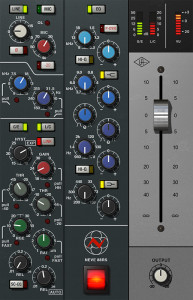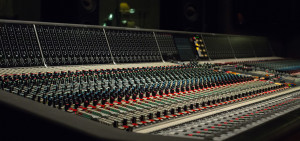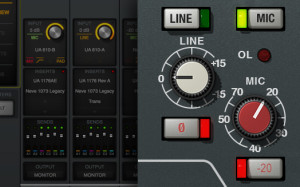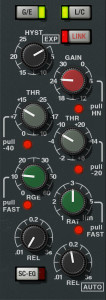Plugin Review: Neve 88RS MkII from Universal Audio
Universal Audio’s emulation of the Neve 88RS channel strip was originally released in 2007, and has become a well loved tool in the UAD-2 toolkit.
In recent years however, Universal Audio has adopted the practice of improving upon old plug-in code, creating even more accurate models of its early plug-in models.
Following in the footsteps of updates to the 1176, Pultec EQ’s, Fairchild, and Neve 1073 is the new Neve 88RS MkII.
This new version adds a more sophisticated modeling of the analog guts of the original, as well as adding a detailed model of the preamp which incorporates UA’s “Unison” technology.
This allows it to be used in conjunction with the UAD Apollo interface’s preamp section. On top of that, the behaviors of the channel output fader and its associated transformer have been modeled as well. All in all a compelling MKII version for UAD-2 users to add to their arsenals.
A Pleasant Surprise
When the original version (now labelled “legacy”) of this channel strip was released 8 years ago, my response was one of interest, but I didn’t feel that it was a tool that I HAD to have.
The Neve 88RS console was touted above earlier models for its transparency, and at that time, most plug-ins were already very transparent, simply by nature of being digital Back then, I was more interested in tools that would model the inherently non-transparent sound (read: nonlinearities, distortions, etc) of the analog world.
Today, such modeled tools are ubiquitous to say the least, and there are so many choices available that it boggles the mind. Given that UA’s last re-modeled plug-in was the Neve 1073, I assumed that the next batch of revamps would be something more along these lines—either the 1081 or the 31102. I was very surprised that they chose the 88R, given its relatively pristine character and less familiar sound. In fact, I can admit I was initially a little disappointed as I had been looking forward to hearing a new version of the 1081 EQ!
However, as I poked around the UAD site and read some comments there, I found myself surprised at how significant this upgrade seemed to be in the minds of other users. Apparently, it sounded substantially better than before, and I found myself compelled. When the opportunity came along to check it out, I was thrilled. And, as I was in the midst of a large mixing project I figured I’d have a great chance to run it through it’s paces in a real-world situation.
Description
The 88RS channel strip models the most useful components of its physical counterpart, doing away with redundant aspects of the original like auxiliaries, bus sends, the monitor section, etc. What you are left with is the preamp/line input, filters, gate/VCA dynamics, EQ, and the channel output fader.
The input section can either be used as a line amplifier or, when switched to mic input, incoming signal can be run through a model of the 88RS preamp. There is a phase reverse switch, and when mic input is selected, a -20 dB pad is available for taming input level to the preamp.
If you are using any of the UA Apollo devices for your audio interface, you’ll have the additional benefit of UA’s Unison technology, in which the Apollo mic pre’s take on the character of the modeled preamp for recording. I was not able to test this functionality as I use PCI-E cards for all of my UAD-2 plugs, but this didn’t stop me from using the mic input in favor of line input almost every time…but more on that later.
From there, your signal enters the filter section: There are low pass and high pass filters set to roll off 12 dB/octave. While the EQ and dynamics sections can be moved around in the signal path, the filter section is static and always occurs directly after the input module.
After the filters, signal hits the expander/gate, and then the compressor/limiter. All four of these functions can be found in the same module, with the expander/gate on the left, and the compressor/limiter on the right.
In addition to all the standard controls, there is a side-chain eq button. When depressed, the EQ section is removed from the audio path and is used to trigger the dynamics for frequency dependent compression for de-essing and the like.
Using the default signal path, the next module in line is the EQ. There are 4 bands of parametric EQ: High, High-Mid, Low-Mid, and Low. By default, the high and low bands act as a wide or narrow bandwidth peaking filter (switchable using the “HI-Q” toggle) and can be switched to shelving mode by pressing the button labelled with the shelf icon.
The two mid-bands don’t offer shelving, but have a fully adjustable bandwidth from very wide to very narrow. By pressing the “P-DYN” switch, the EQ can be placed before the dynamics section in the signal path.
Finally, we hit the output fader, which is the last part of the plug-in that employs analog modeling. After the fader, there is a transparent digital trim control across the output giving you +/- 20 dB of uncolored level control over the final tonality you’ve created.
In Use
When I started using the 88RS, I was in the midst of mixing a bunch of different songs and the original score for Netflix’sWet Hot American Summer. There were a wide variety of genres represented, though all were modeled after pop and rock of the late 70’s and early 80’s.
Ignoring the fact that the actual 88RS console was first released in 2001, I dug right in. I should add that for this project all of the work was done in Pro Tools HD 11, and that I have both an Octo and Duo Card in my home studio—plenty of power for most tasks.
The first thing I noticed when instantiating the plug-in was really subtle. Modeled after the most refined example of the Neve line, I expected the 88RS to be virtually un-noticeable, and it was, but in a very Neve-ish way: Even with everything zeroed out, it seems to impart an elegant sheen just by being in the signal path(I’ll pause here for the eye rolls)
At any rate, this all changes pretty radically the minute you start making adjustments. This plug is capable of making some really substantial tonal changes in some very elegant ways, and I was very much pleasantly surprised. I almost always found myself clicking the mic input button and pushing the preamp gain enough to just starting kissing the overload light.
There’s a lot of tone available in the preamp by itself and when pushed, it can make some pretty gnarly-sounding distortion when driven hard. That said, I rarely found that a crazy amount of drive was necessary, and goosing it a little bit definitely helps to beef up a limp or characterless-sounding signal. I found myself using the mic preamp for a lot of different sources, drums, bass, electric guitars—you name it.
The dynamics section is also very flexible. From subtle to intense, it accomplishes most tasks with ease. While I rarely use any gating, I found this one easy to dial in, and capable of handling the most typical usage one might employ for snares, kicks, or toms. The compressor was surpassingly flexible as well, capable of both relatively transparent handling of dynamics (which I expected), as well as hard, unsubtle pumping and limiting (which I was more surprised by).
For snares and bass, I found myself using the compressor in conjunction with a distorted signal from the mic preamp more than once, and felt no less satisfied than I would having using my usual favored tools for that task.
The EQ on the 88RS really shines. Copious amounts of gain can be added to a given frequency without sounding unnatural, and even when it gets pushed, the tone is still very smooth and appealing.
This part of the plugin employs a “best of both worlds” aesthetic, easily handling both broad tonal changes and surgical sculpting well. I particularly like the high end, and found it perfect for adding clarity to strings in dense mixes, as well as a Pultec-ish lift to distorted electric guitars.
When used judiciously, and in conjunction with the other modules in the strip, even difficult sounds can easily be transformed into more unique sonic components that are pleasing to the ear and fit right into a complex mix.
In Summary
I was pleasantly surprised by how I much I enjoyed using this plug-in. The 88RS ended up being as flexible as I expected, and was also loaded with much more character than I had anticipated.
There is a price for this in two ways however: At $299.00 ($149.00 for current owners of the legacy version), your might find yourself torn when deciding how to best spend that amount, whether in the UAD world, or out of it.
Additionally, the 88RS uses a lot of DSP. One mono instance of this beast will use up 38.3% of one DSP on a UAD-2 card. For me, this meant that in theory, I could use up to 20 instances on a given session—although the likelihood of that happening is pretty low.
If you did find yourself needing this plug-in all over a session, I would recommend turning off the “Load-lock” option in the UAD system preferences, which prevents the software from reserving DSP power that the plug-in might not be using.
In the case of the 88RS, only the input stage, filters, and fader module are “on” at all times; with the EQ, gate, and EQ sections off, a substantial amount of processing horsepower is saved. Also, for owners of Apollo interfaces, any heavy processing could be printed during the recording stage—for those willing to commit that is!
All in all, Universal Audio has another great release on its hands. While there will be the inevitable groanings about paid upgrades from legacy owners, in this case, the additional features and excellent sound quality offer a compelling reason to pull the trigger.
Of course, as with all UAD plug-ins, it’s quite easy to demo, so for those who are interested or unsure I highly recommend trying it out!
Please note: When you buy products through links on this page, we may earn an affiliate commission.











